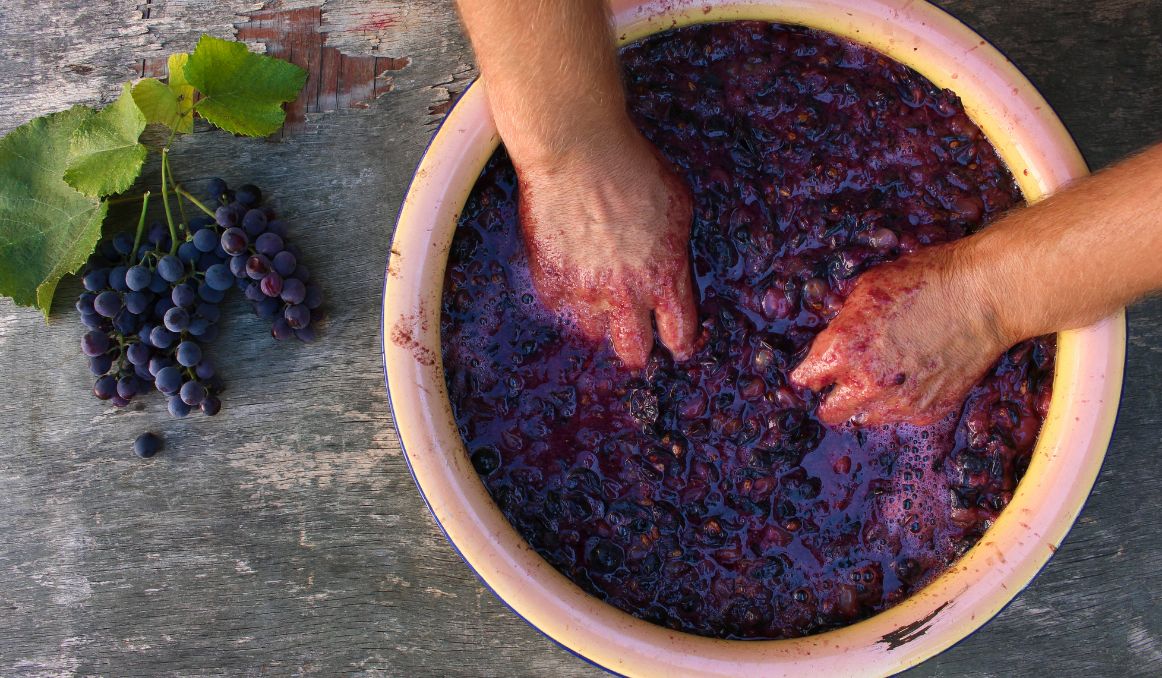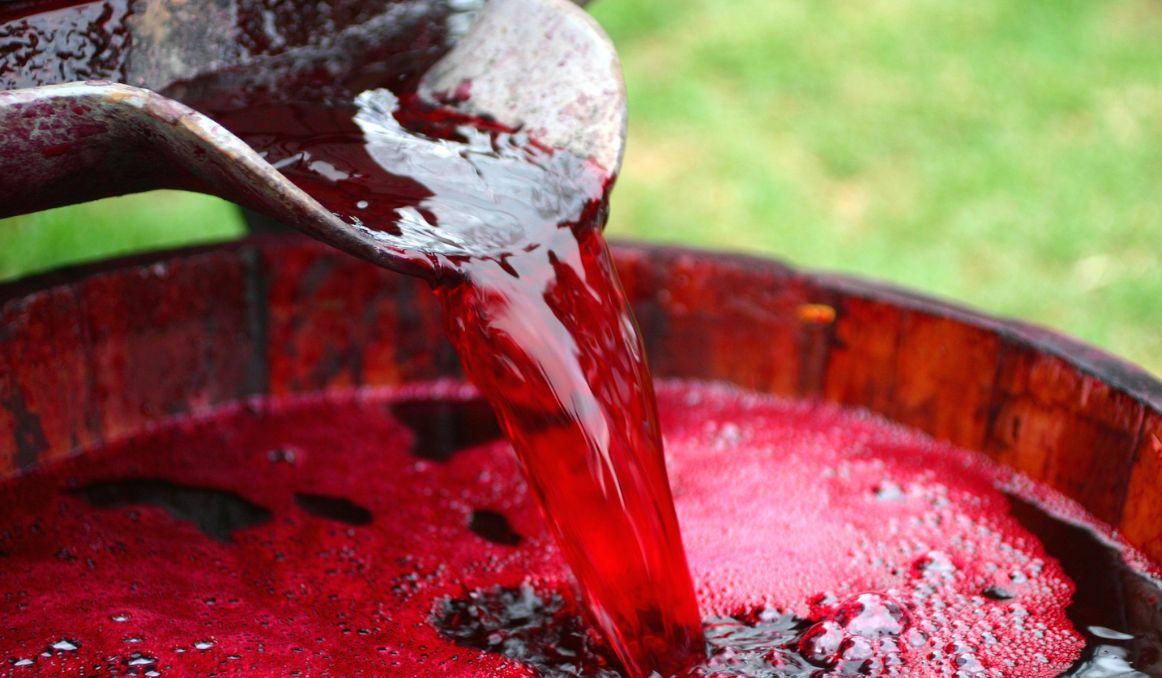Can You Make Your Own Yeast for Wine? Your Complete Guide
Wine has been called the nectar of the gods for millennia. Indeed, there is even a god of wine, Dionysus. Beer is much beloved the world over, as is liquor. But no god exists that represents beer or liquor as of yet.
The history of wine dates back to prehistoric days. Scientists have found that monkey make their own wine. Which arguably means cavemen also made their own wine.
It’s a pretty simple process, really. We only make it more complicated than it needs to be because… well, that’s the nature of humanity, isn’t it?
So how do you make your own wine? And can you make your own yeast for your wine?
The Art of Wine Making

At its core, wine is a simple beverage that brings much joy and health to most who drink it.
You simple pick grapes, crush them and allow them to sit out.
That’s it.
Monkeys do it with a variety of fruits. They also do it with palm sap.
Other cultures make a wine type beverage with a variety of fruit.
One in particular, tepache, comes from Mexico, using the fruit and the peel of a pineapple.
You can add sugar, but you don’t have to.
It doesn’t even need to be boiled.
You can simply crush the fruit to expose the natural sugars, then let nature take its course.
Nature Taking Its Course: Yeast
Nature taking its course means allowing yeast to get into the fruit crush.
Yeast is one of the oldest living organisms on earth and it is very good at its job. A single celled eukaryotic fungi, its only job is to reproduce, and it does so by consuming sugars and starches and converting them to alcohol and carbon dioxide.
It is everywhere, all the time, and the only thing of which there’s more in our environment are bacteria. But yeasts are much larger than bacteria, ten times larger in fact, so they take up much more space.
Thus, for thousands of years, all wine makers had to do, human or otherwise, was leave the crushed fruit out and wait for yeast to get busy.
Fast forward to the 19th century, and we now find ourselves buying yeast and wondering if we can or have to “make” it ourselves.
The Discovery of Yeast and Its Commercialization
In the 1800s, French mathematician and scientist Louis Pasteur was able to observe yeast under a microscope and thus tell the world what it was doing.
It was, come to find out, yeast that made our fruits and grains, crushed and boiled and left out, alcoholic. Yeast was responsible for the process we now call fermentation.
Pasteur’s discovery coincided quite nicely with the rise of industrialization and commercialization, so of course yeast became another commodity.
Companies began manufacturing and selling various strains of yeast. From brewer’s yeast to baker’s yeast, to wine yeast, and everything in between.
There’s a yeast for ale, and a yeast for lager, a yeast for sourdough and a yeast for whole wheat bread, and of course different yeasts for different wines.
Why?
Yeast does so much more than simply convert sugar to alcohol. It also contributes hundreds of micronutrients, chemical compounds, and flavor and aroma complexities to the food and beverages it ferments. It actually makes food and drink more healthy, or at the very least a new kind of healthy, than it was in its original state.
And it was of course incredibly convenient for brewers, bakers, and vintners to be able to buy the yeast they needed on demand. It still is.
But, can you skip the commercialization and make your own yeast for your wine?
Can You Make Your Own Yeast for Wine?

Of course you can make your own wine yeast!
Remember, you’re not really “making” anything. You’re encouraging an already existing living organism to flourish in an environment of your choosing, and then you are helping that living organism to reproduce.
You can no more “make” yeast then you can make mushrooms or grapes or kittens or babies for that matter.
You merely provide the environment and “grow” them, with a little help from outside forces.
Saccharomyces Cerevisiae
Saccharomyces Cerevisiae is the most commonly used yeast in wine, beer, and bread.
The trick is to finding the right strain of this yeast.
S. Cerevisiae is the most commonly used because it has been found to be the most reliable in terms of fermentation, flavor, and aroma profile delivery. We don’t expect many problems with off flavors, stuck fermentation, or unexpected and underperforming results.
S. Cerevisiae has thousands of known strains, and you can select from among any of them to grow your own for wine.
To “make” your own wine yeast, the very best, and most authentic strategy is to allow nature to take its course.
Most websites will tell you to buy dry yeast and rehydrate it, or start with must or juice and grow the yeast from there, but remember that you are not then actually growing your own yeast, you are merely expanding on what someone else, or some commercial business has already done.
The great thing about wine yeast is that it is already sitting on the skins of your grapes.
So, you can take one of two approaches.
You can do like the monkeys, the cavemen, and all of our ancestors have done for thousands of years and merely crush your grapes, put them in a container, cove the container with cheesecloth, and wait for fermentation to take place naturally.
Or, you can sanitize your grapes first, boiling off all the existing yeast, then follow the same process as above and wait for wild yeast to be attracted to the crushed fruit.
Either way, your grape juice should ferment just fine into wine over several days. You can tell because your liquid will be bubbly and fizzy.
You are unlikely to have to worry about contaminants or spoiling because the alcohol created during fermentation will take care of that.
Experiment with different batches, different approaches, and different flavors until you find one you love.
Then, simply strain off the collected, of “flocculated” yeast, and preserve it for your next batch.
Live yeast will keep in cold storage for up to two weeks.
Happy yeast growing!
Passionate about the beer and/or wine making process? So are we! If you’re interested in finding out how you can use our technology to control fermentation and monitor your yeast, save work hours and improve the cost-efficiency of your business, drop us a line at [email protected] or check out our product pages:
- Oculyze BB 2.0 (Better Brewing) Yeast Cell Counter App + Hardware
- Oculyze FW (Fermentation Wine) Yeast Cell Counter App + Hardware
Also, you can now get access to a fully functional demo account to test our Web App. Completely free of charge and with no commitment to purchase.
Sources:
- http://www.brooklyn.cuny.edu/bc/ahp/MBG/MBG4/YeastBact.html
- https://en.wikipedia.org/wiki/Yeast_in_winemaking
- https://blacktailnyc.com/how-to-make-wine-yeast-from-scratch/
- https://www.cawineclub.com/blog/yeast-and-winemaking-many-yeasts-viewpoints/
Never miss a beat and get real time updates with a new article each workday by subscribing our social media channels.
Instagram | Facebook | Twitter | YouTube


